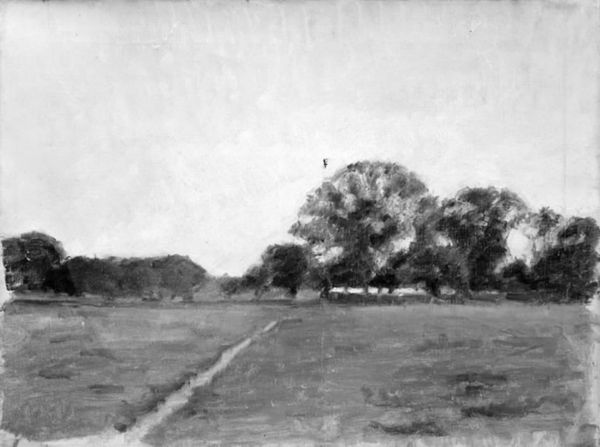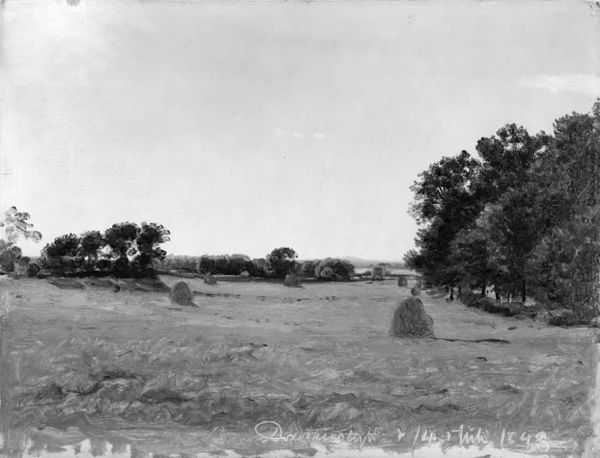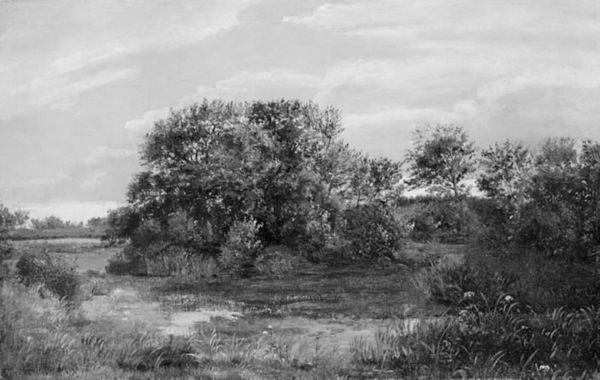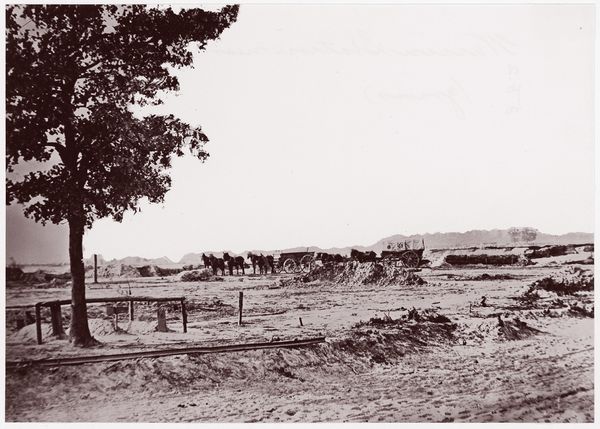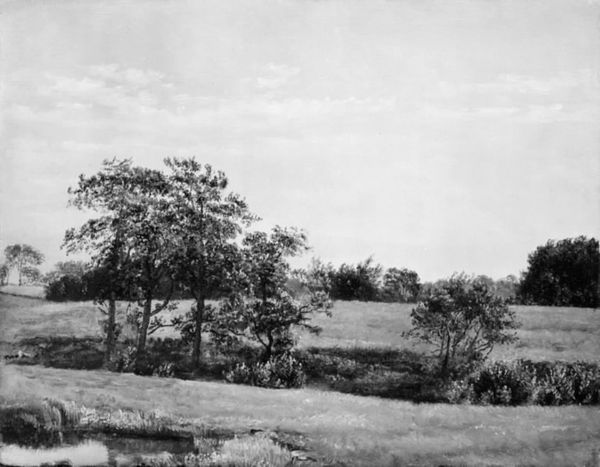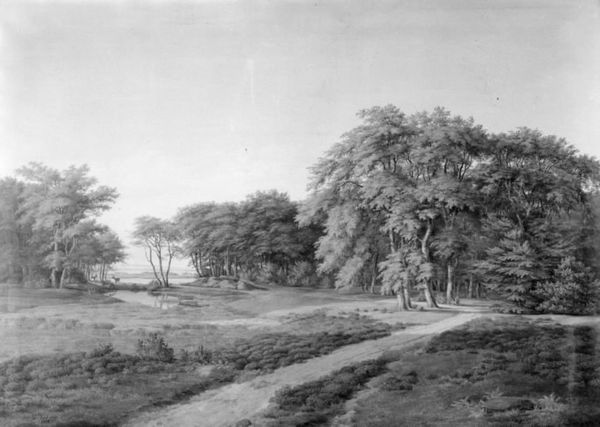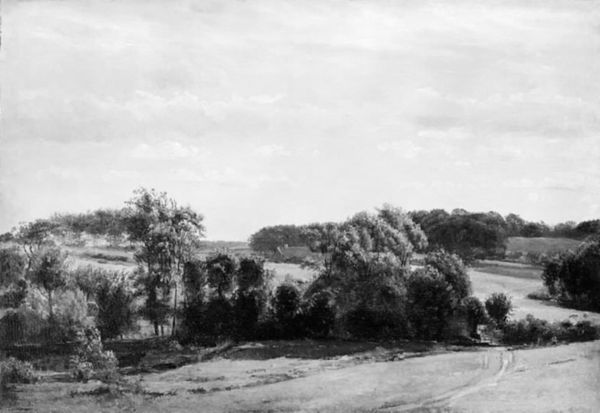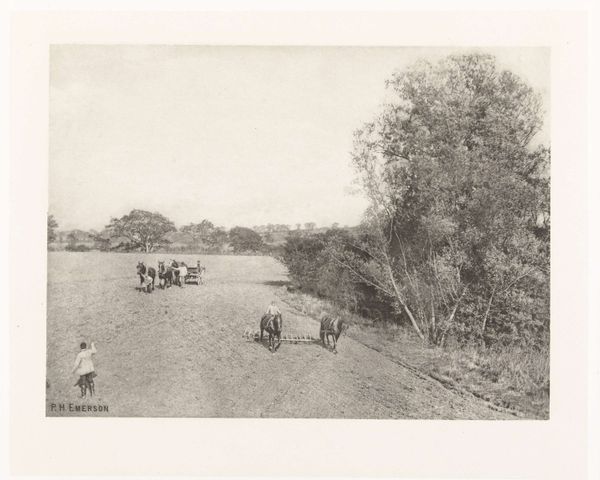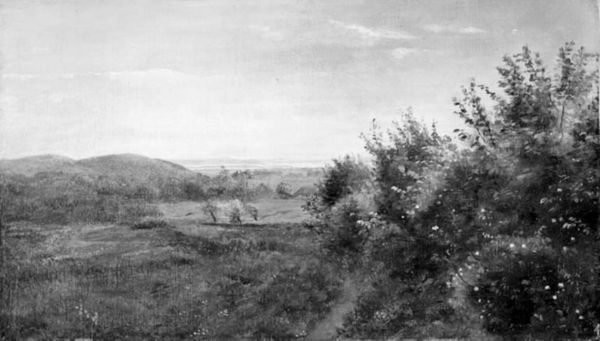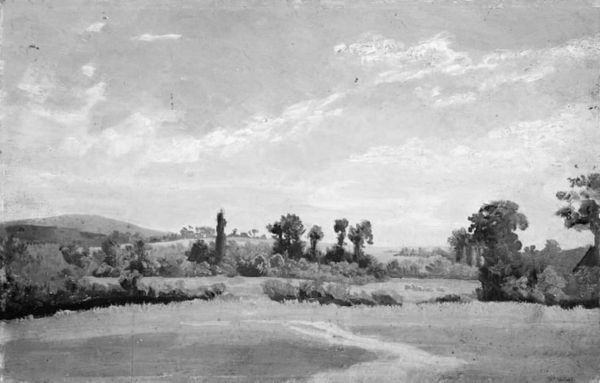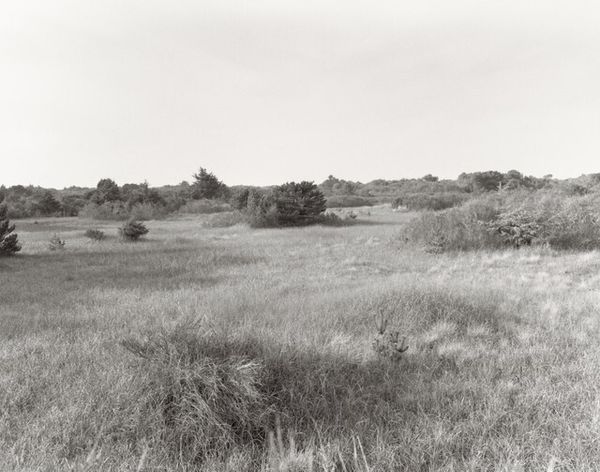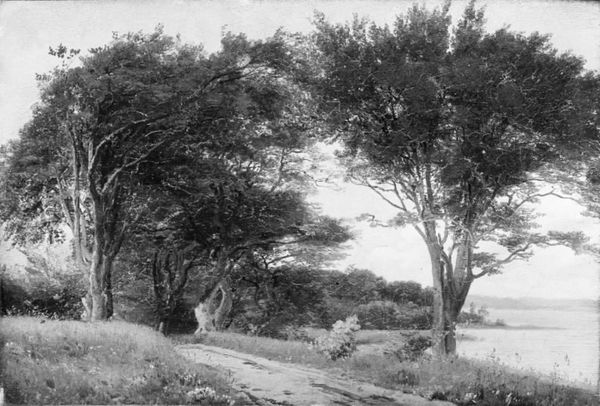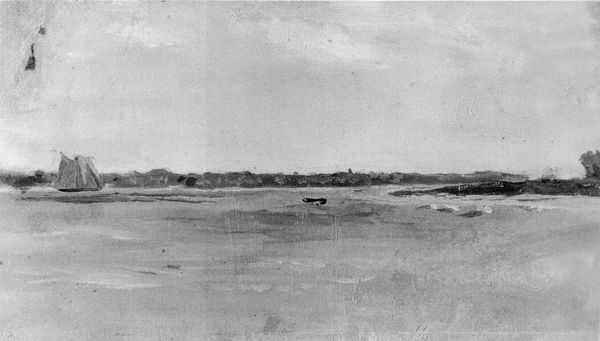
Dimensions: 20.5 cm (height) x 30.5 cm (width) (Netto), 30.6 cm (height) x 40.4 cm (width) x 4 cm (depth) (Brutto)
Curator: Welcome. Here we have Lorenz Frølich's "Meadow with a Black Horse Grazing," completed in 1854. It is oil on paper, mounted on canvas and it is part of the collection at the Statens Museum for Kunst. Editor: My first thought is how subdued the palette is, verging on monochrome, and that the horse, despite its name, blends almost seamlessly into the landscape. There’s a stillness, a quiet intimacy to the scene. Curator: Absolutely. The painting exemplifies a burgeoning interest in naturalism and plein-air painting during the mid-19th century. While realism was certainly gaining ground as an aesthetic, Danish art wrestled with its own forms of nationalist identity formation, as artistic circles were attempting to define distinctly “Danish” painting styles. Editor: Which perhaps explains this restrained presentation? The land is both ordinary and intimate. How much were these landscape paintings about establishing or cementing ownership of land? Or presenting an ideal to be consumed, perhaps, in alignment with particular power dynamics. Curator: Precisely. The landscape became a crucial site for projecting national identity and ideals. Consider, in Denmark’s case, its complex relationship with Germany at the time, with Schleswig-Holstein as territories constantly disputed between these entities. Artists sought to evoke the spirit of the nation through these tranquil, yet subtly potent images of Danish fields and shores. The horse becomes more than just an animal; it’s almost an emblem of pastoral prosperity. Editor: Yes, that somber color scheme actually highlights the socioeconomic dimension rather clearly. The almost bleached aesthetic is quite subversive. Are we romanticizing rurality or exposing it, with that subtle suggestion of laboring servitude? Curator: An intriguing point. We could certainly extend this into a conversation about class. I also read the somber tone as more about quiet observation and reverence toward the everyday details of nature and labor. It’s an interesting pivot towards seeing art and identity in more inclusive terms, I believe. Editor: I suppose this is exactly the point. How we can never separate the "art" from its context. Curator: True. Perhaps this muted landscape speaks loudest about the very act of seeing and representing the world around us. Editor: It's made me see the work differently, especially regarding its sociopolitical subtleties. Curator: For me, reflecting on how national identity can be both projected and quietly questioned through an artist's vision remains very relevant.
Comments
No comments
Be the first to comment and join the conversation on the ultimate creative platform.
